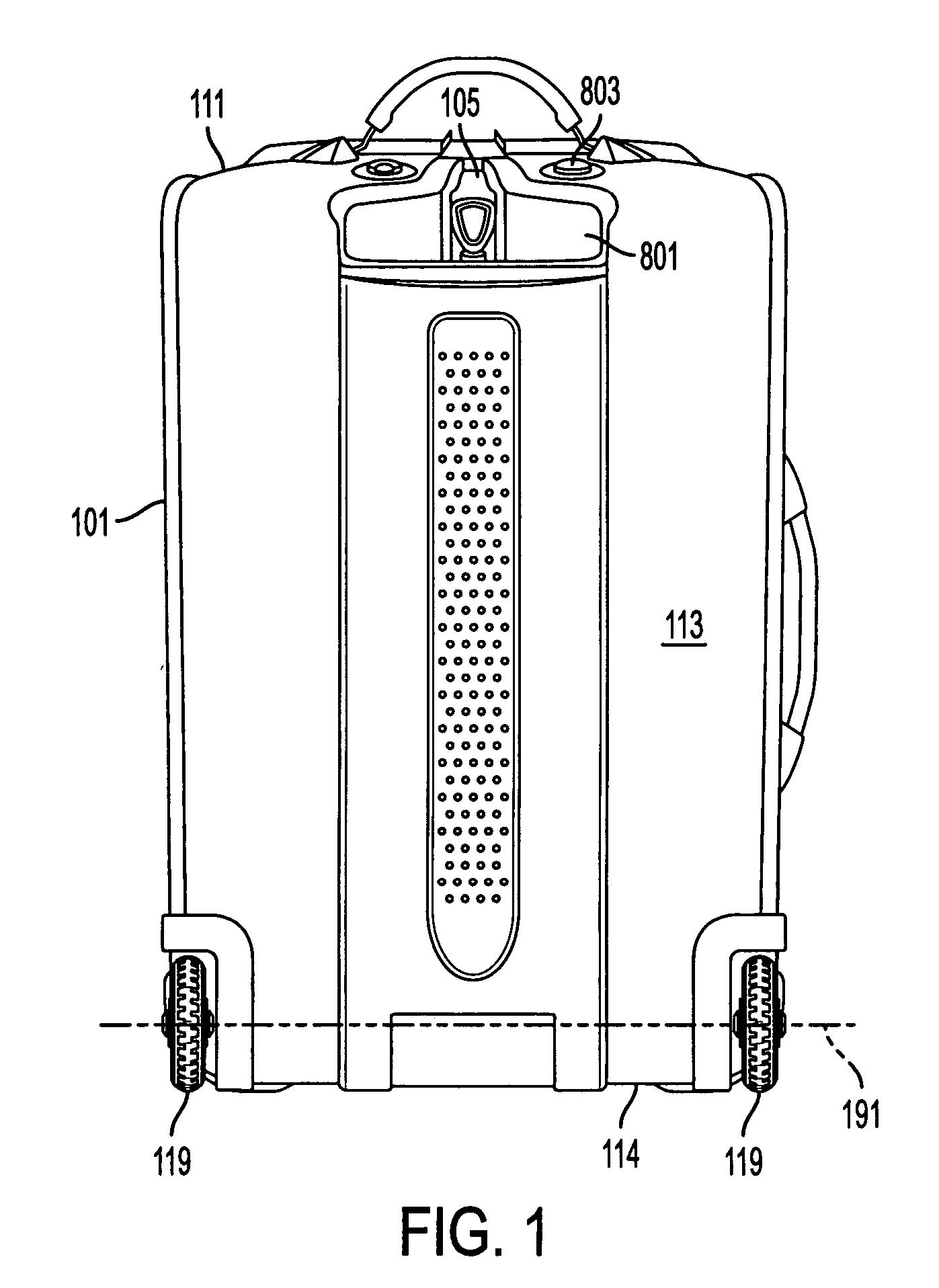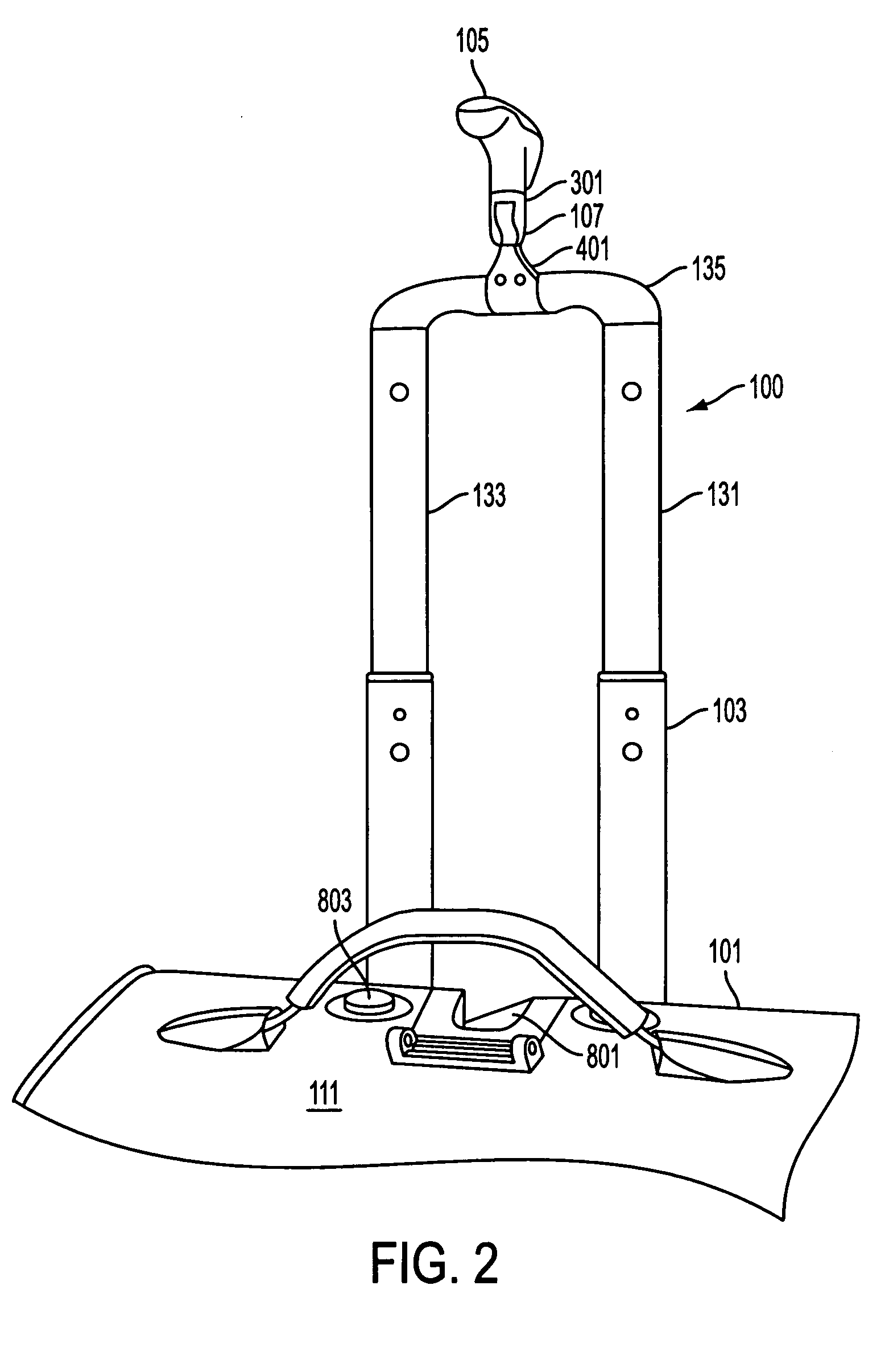Despite the convenience of being able to tow a piece of luggage as opposed to carrying it when traveling, towing a piece of luggage can be awkward and uncomfortable.
One reason that towing a piece of luggage can be uncomfortable lies in the positioning and the shape of the towing handle of most towing members.
When towing such luggage long distances, this position can become uncomfortable and the user often finds it necessary to switch hands one or more times to prevent fatigue.
Regardless of the disadvantages in comfort associated with the towing handle configuration as described above, alternative orientations of the towing handles are often not available without compromising other aspects of the utility of the handle or luggage.
Another
disadvantage associated with the towing handle configuration described above is that, due to the grasp needed to hold onto the towing handle, the maneuverability of a towed piece of luggage can become limited by the person's inability to further twist his or her
wrist.
The problem with these handles is that they are generally limited to traditional arrangements in their stored position.
In particular, because the internal space of the luggage is used for packing, it is undesirable to have the towing handle project into the internal volume of the luggage more than is absolutely necessary.
This is also space that is at least partially lost due to the telescoping arm action anyway.
If one was to attempt to stow a rotating handle of the prior art at a direction perpendicular with the wheel rotation axis and parallel to the direction of movement, the handle would extend undesirably into the internal volume of the bag taking up space which would better be used for storage and / or would be forced to extend outside the frame of the baggage and would be subject to damage.
The problem with prior art handles arranging the principal dimension of the grip portion of the handle parallel to the wheel rotation axis when in the retracted position is that it generally requires the user to place their
wrist in an uncomfortable rotated position in order to grasp the towing handle and then rotate their
wrist to get the towing handle to the towing position.
Further, in some cases, for instance in handles such as those described in U.S.
patent application 2003 / 0132079 and PCT patent publication WO 03 / 053186, the problem is particularly noticeable because the handle is located between the tubes of the towing arm and therefore the user must first raise the arm to its extended position by grasping the bridge, and then rotate the handle into the towing position by reaching between the telescoping poles and rotating the handle into position, and then generally, completely change their grip to grip the grip portion of the handle when towing.
This multi-part movement is hard on the wrist as the wrist often needs to be rotated to both extend the arm and rotate out the handle, can often require two hands, and can be time-consuming when the user is trying to get the handle stowed quickly to get the bag checked or into an overhead storage compartment.
It can also be difficult when a user is trying to get out of the way of others who s / he is blocking during the time of raising the handle.
Packing the handle and then moving the handle from the expanded to retracted position or vice versa creates a significant amount of extra effort as it does not allow for a user to have a handle which is easily graspable from the stowed position, and maneuverable into a position where the user's hand can act more naturally without requiring multiple
hand movements, two hands, or wrist contorting motion.
 Login to View More
Login to View More  Login to View More
Login to View More 


